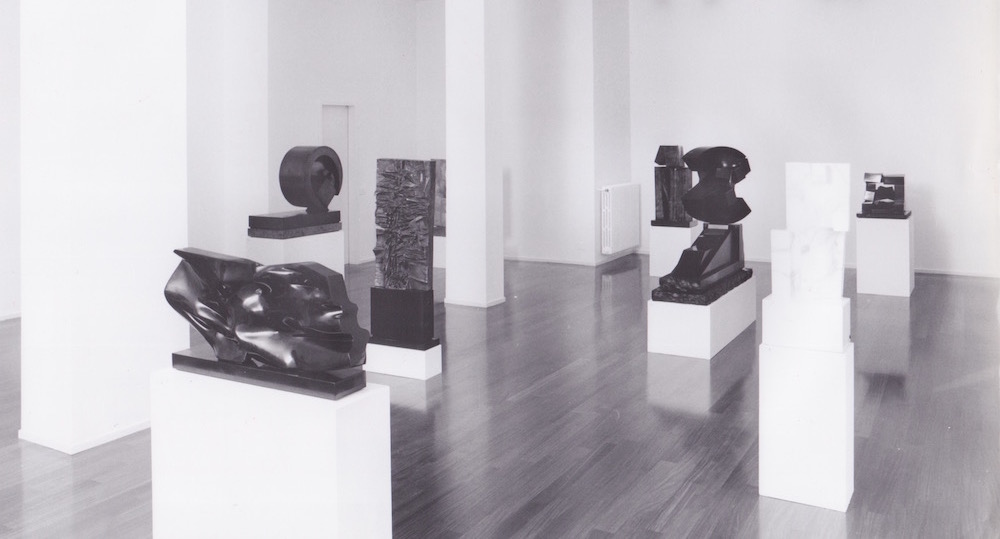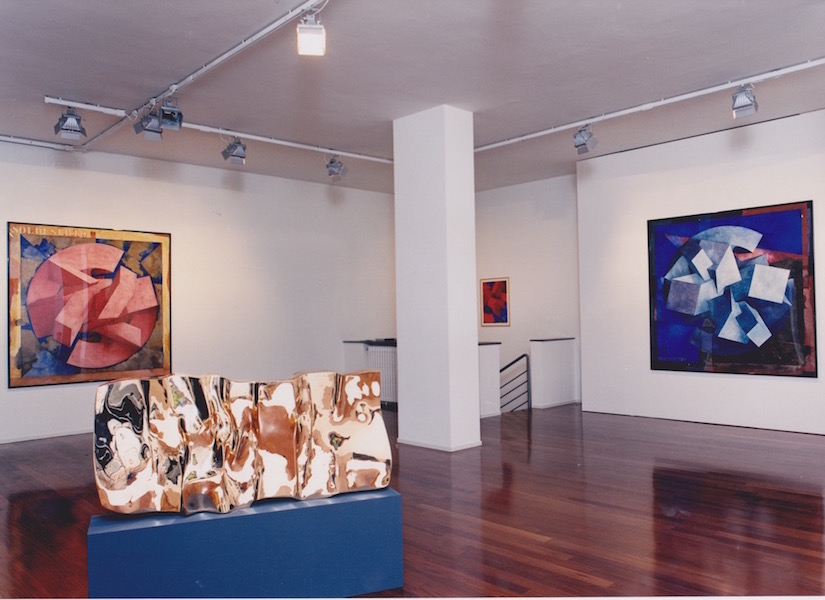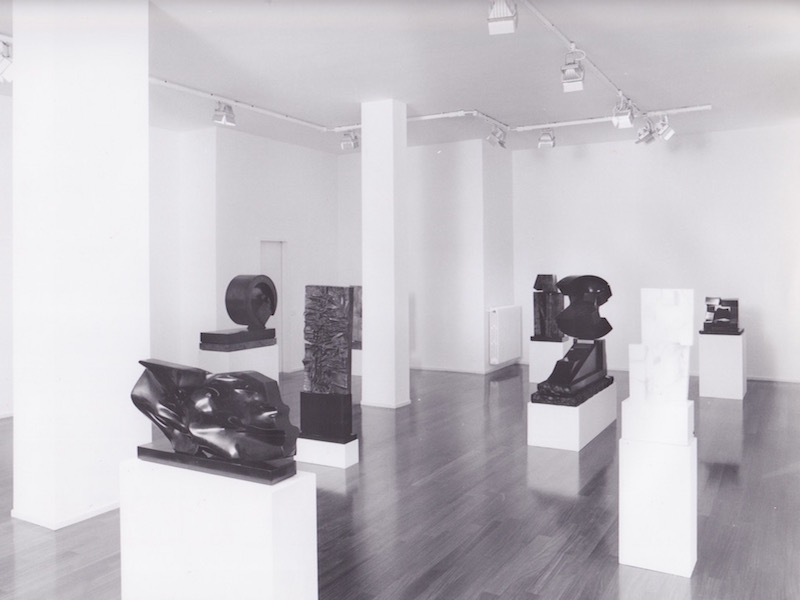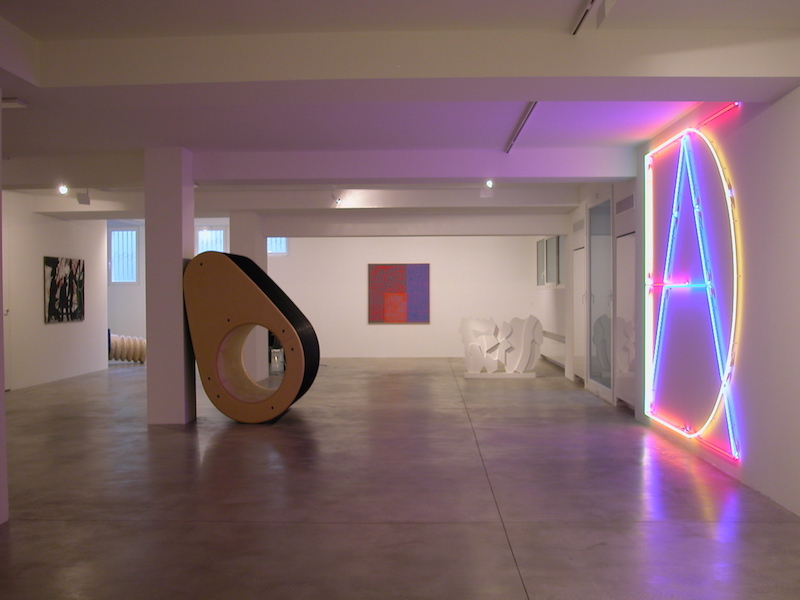GIÒ POMODORO
GIÒ POMODORO

Biography
Giò Pomodoro was born in Orciano di Pesaro in 1930 and passed away in Milan in 2002. In the ‘50s he moved to Milan with his brother Arnaldo, was contributor of “Gesto” magazine and took part in the exhibitions of “Gruppo Continuità”, supported by Giulio Carlo Argan, Guido Ballo and Franco Russoli. At the beginning of the ’60s Pomodoro developed the “Superfici in tensione” (“Surfaces in tension”), works based on the concept of empty space that makes the shape live as a spatial presence. The first works were made of fabric, then on fiberglass and polished or patinated bronze, finally from the ’70s on marble, a material traditionally used to sculpt the “full”. In those years, Pomodoro’s sculpture became monumental and mysterious, the grandeur of its dimensions referring to cultures and myths of ancient civilizations. The artist also designed squares and projects of urban redevelopment, such as the vast housing complex in Monza (piazza Ramazzotti) including functional elements such as benches, lighting and public green spaces. After the beginning in the ‘50s, from the second half of the 90s he went back to goldsmiths with renewed interest.
His solo exhibitions have been held in prestigious institutions, such as: Palazzo Ducale, Urbino and Museo del Gioiello, Vicenza (2018), Accorsi-Ometto Foundation, Turin (2017), Palazzo del Monferrato, Alessandria (2011), Villa Recalcati, Varese (2010), MACN, Monsummano Terme (2006), Auditorium Parco della Musica, Rome (2004), University of Bari (2003), Italian Institute of Culture, Cologne (2001), San Pietro Museum, Colle Val d’Elsa (2000), Veranneman Foundation, Brussels (1999, 1991), Palazzo del Monte di Pietà, Padua (1998), Palazzo Vecchio, Florence and Kunsthistorisches Museum, Vienna (1996), Yorkshire Sculpture Park, Wakelfield and the Querini Stampalia Foundation, Venice (1995), Genia Schreiber University Art Gallery, Tel Aviv (1993), Archaeological Museum, Milan (1992), Villa Renatico Martini, Monsummano Terme (1990), Rotonda della Besana, Milan (1989), Chiesa di S. Ambrogio, Milan and Palazzo dei Leoni, Messina (1987 ), Palazzo Ducale, Pesaro (1986), Palazzo Civico, Lugano (1985), Palazzo Lanfranchi, Pisa (1984), Ca’ Pesaro, Venice (1977), Emperor’s Castle, Prato and Musée d’Ixelles, Brussels (1976), Loggetta Lombardesca, Ravenna (1974), Palais des Beaux-Arts, Brussels (1963), Galerie internationale d’art contemporain, Paris (1959).
Several are the collective exhibitions and the public collections around the world that include his works. In 1994 Pomodoro won the price “Premio Internazionale Pietrasanta e la Versilia nel mondo”, in 2002 he was the first Italian to receive the “Lifetime Achievement Award in Contemporary Sculpture” and in 2004 his family donated to the Municipality of Forte dei Marmi the sculpture “La Figlia del Sole”, on the occasione of his solo show. Giò Pomodoro also took part in important international exhibitions: Cairo Biennial (1998), Venice Biennale (1984, 1978, 1964, 1962, 1956), Documenta, Kassel (1964, 1959). His collaboration with Galleria Fumagalli began in 1998 when a personal show was set up in the gallery, presenting sculptures and papers from 1958 to 1998. On the occasion, a catalog with a text by Marco Meneguzzo was published. In 2000, the gallery presented a second solo show accompanied by the book “Giò Pomodoro, l’opera disegnata”, a catalogue raisonné that included all his works on paper, with a text by Giovanni Maria Accame.
Biography
Giò Pomodoro was born in Orciano di Pesaro in 1930 and passed away in Milan in 2002. In the ‘50s he moved to Milan with his brother Arnaldo, was contributor of “Gesto” magazine and took part in the exhibitions of “Gruppo Continuità”, supported by Giulio Carlo Argan, Guido Ballo and Franco Russoli. At the beginning of the ’60s Pomodoro developed the “Superfici in tensione” (“Surfaces in tension”), works based on the concept of empty space that makes the shape live as a spatial presence. The first works were made of fabric, then on fiberglass and polished or patinated bronze, finally from the ’70s on marble, a material traditionally used to sculpt the “full”. In those years, Pomodoro’s sculpture became monumental and mysterious, the grandeur of its dimensions referring to cultures and myths of ancient civilizations. The artist also designed squares and projects of urban redevelopment, such as the vast housing complex in Monza (piazza Ramazzotti) including functional elements such as benches, lighting and public green spaces. After the beginning in the ‘50s, from the second half of the 90s he went back to goldsmiths with renewed interest.
His solo exhibitions have been held in prestigious institutions, such as: Palazzo Ducale, Urbino and Museo del Gioiello, Vicenza (2018), Accorsi-Ometto Foundation, Turin (2017), Palazzo del Monferrato, Alessandria (2011), Villa Recalcati, Varese (2010), MACN, Monsummano Terme (2006), Auditorium Parco della Musica, Rome (2004), University of Bari (2003), Italian Institute of Culture, Cologne (2001), San Pietro Museum, Colle Val d’Elsa (2000), Veranneman Foundation, Brussels (1999, 1991), Palazzo del Monte di Pietà, Padua (1998), Palazzo Vecchio, Florence and Kunsthistorisches Museum, Vienna (1996), Yorkshire Sculpture Park, Wakelfield and the Querini Stampalia Foundation, Venice (1995), Genia Schreiber University Art Gallery, Tel Aviv (1993), Archaeological Museum, Milan (1992), Villa Renatico Martini, Monsummano Terme (1990), Rotonda della Besana, Milan (1989), Chiesa di S. Ambrogio, Milan and Palazzo dei Leoni, Messina (1987 ), Palazzo Ducale, Pesaro (1986), Palazzo Civico, Lugano (1985), Palazzo Lanfranchi, Pisa (1984), Ca’ Pesaro, Venice (1977), Emperor’s Castle, Prato and Musée d’Ixelles, Brussels (1976), Loggetta Lombardesca, Ravenna (1974), Palais des Beaux-Arts, Brussels (1963), Galerie internationale d’art contemporain, Paris (1959).
Several are the collective exhibitions and the public collections around the world that include his works. In 1994 Pomodoro won the price “Premio Internazionale Pietrasanta e la Versilia nel mondo”, in 2002 he was the first Italian to receive the “Lifetime Achievement Award in Contemporary Sculpture” and in 2004 his family donated to the Municipality of Forte dei Marmi the sculpture “La Figlia del Sole”, on the occasione of his solo show. Giò Pomodoro also took part in important international exhibitions: Cairo Biennial (1998), Venice Biennale (1984, 1978, 1964, 1962, 1956), Documenta, Kassel (1964, 1959). His collaboration with Galleria Fumagalli began in 1998 when a personal show was set up in the gallery, presenting sculptures and papers from 1958 to 1998. On the occasion, a catalog with a text by Marco Meneguzzo was published. In 2000, the gallery presented a second solo show accompanied by the book “Giò Pomodoro, l’opera disegnata”, a catalogue raisonné that included all his works on paper, with a text by Giovanni Maria Accame.
Exhibitions
GROUP EXHIBITIONS
Exhibitions
GROUP EXHIBITIONS





